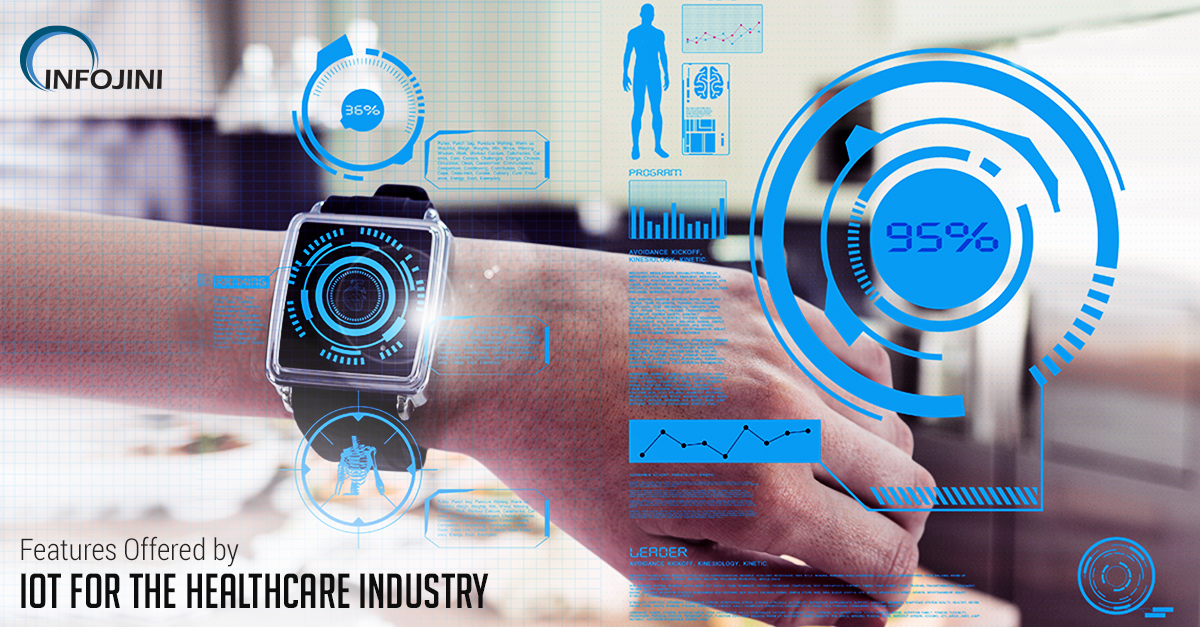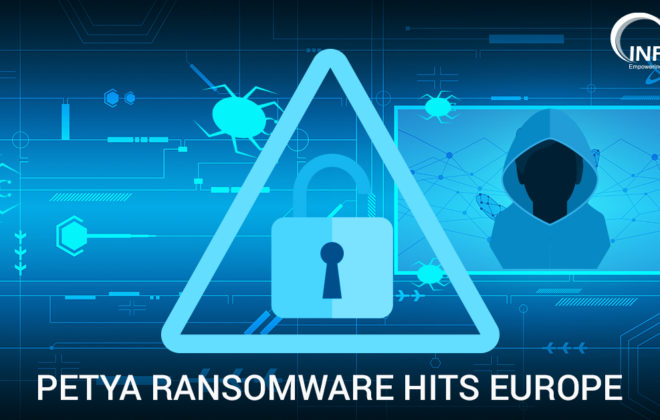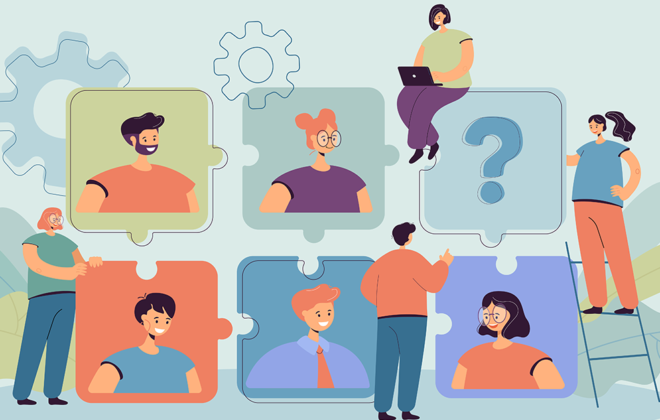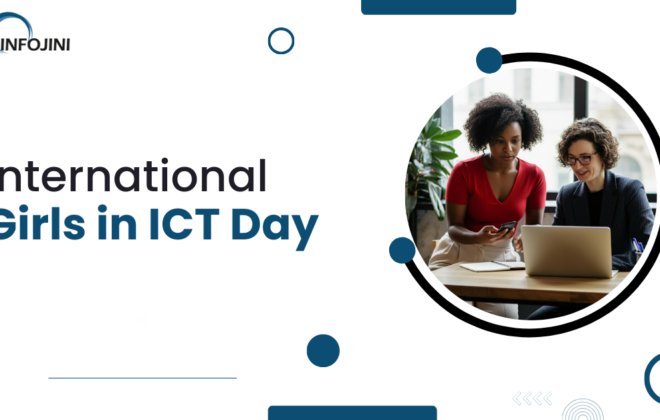Features Offered by IoT for the Healthcare Industry
Internet of Things (IoT) is responsible for transforming how many industries work in the modern-day scenario. From the finance to aerospace sector, IoT is truly revolutionizing several important global sectors. It has also modified the healthcare sector allowing it to reach new heights of safety and seamless customer experience.
IoT aims at personalization of technology to make it more accessible in the day to day usage. With increased interconnectivity and data sharing facilities, IoT has helped several devices connect with each other for faster data processing. The collaborative computing efforts of multiple devices have helped the overall growth in the healthcare industry’s steady growth. As per Forbes, the reports of MarketResearch.com have estimated a $117 Billion whopping market for Healthcare IoT by the year 2020.
Some of the best uses and benefits of IoT in the healthcare industry are listed below.
Fitness Tracking
Fitness trackers are the 21st Century invention that are a direct result of the IoT trend. It takes the concept of a smartphone to the next level by allowing the technology to attain new levels of compression. Fitness trackers help the wearers, take care of the medicinal schedules as well as guide them through the best course of action while following a diet and exercise regimen.

These smart devices track the health of the user in real time, thereby allowing them to constantly monitor their progress easily. When coupled with a powerful smartphone, these devices can help track several health governing factors like calorie intake, heartbeat, quality of sleep as well as sinus rhythm for breathing.
Health Monitoring
IoT has helped in the creation of a stable network between the caretakers and caregivers. The hospitals can now remotely track their customer’s health and provide the necessary assistance or reminders as per the requirement. The customer’s life has improved significantly with the use of health monitoring devices since he/she is no longer bound to a hospital bed for his/her treatment. Instead, he/she can go enjoy the fresh weather while still being under health surveillance.
Tackling Emergencies
After achieving a stable network for providing comprehensive health surveillance solutions, the hospitals are taking a step in the direction of providing solutions for emergency situations. The real-time health tracking solutions are coupled with location sharing services to provide the needed assistance quickly. Hence, IoT has significantly helped improve the customer experience in the healthcare industry.
For example, in case a smart health band detects the possible case of a cardiac arrest, it will automatically inform the concerned hospital as well as call an ambulance for the necessary service.
Better Ways of Delivering Drugs
IoT is responsible for modifying the drug delivery system by several folds. With a way to modify the system properly, the drugs can easily provide needed medication at a more precise location with minimal damage to the body. Unlike the previous methods, the IoT devices are often injectable and connected to the smart device via the means of a wireless network. The use of nanobots for delivering drugs to the remote parts of the body is a great example of this modern-day system.
IoT in healthcare is moving a step closer towards making the dream of smart hospitals a reality with the combination of above-mentioned technologies. These smart hospitals will also incorporate data sharing and migration facilities using cloud-based servers to enable easy transfer of patients from one hospital to another. Furthermore, the use of Artificial Intelligence (AI) technology will only make the IoT revolution more and more successful in modifying the healthcare industry.
Tags In
William B. Young
Related Posts
Subscribe For Updates
Categories
- Accountant
- AI
- Automation
- Awards and Recognitions
- Blue Collar Staffing
- Burnouts
- Campus Recruiting
- Cloud
- Co-Ops agreements
- Company Culture
- Compliance
- contingent workforce
- Contingent Workforce
- COVID-19
- Cyber Security Staffing
- Data Strategy
- Digital Transformation
- direct sourcing
- Distributed Workforce
- Diversity
- Diversity & Inclusion
- Economy
- Events & Conferences
- fleet industry
- Gig Economy
- Girls in Tech
- Global Talent Research and Staffing
- Government
- Healthcare
- Healthcare Staffing
- Hiring Process
- Hiring Trends
- Home Helathcare
- HR
- HR Practices
- HR Tech
- IT
- Labor Shortages
- Life Science
- Local Governments
- News
- Nursing
- Payroll Staffing
- Public Sectors
- Recruiting
- Remote Work
- Skill Gap
- SMB Hiring
- Snowflake
- Staffing
- Staffing Augmentation
- Staffing Challenges
- Talent ROI
- Tech Staffing
- Technology
- Tips & tricks
- Total Talent Management
- UI/UX Design
- Uncategorized
- Veteran Staffing
- Veterans Hiring
- Veterans Hiring
- Workforce Management
Recent Posts
- Automation in Recruiting: From Chatbots to Predictive Screening
- Gig Economy Expansion: The Impact on Talent Pools and Business Models
- Skills-Based Hiring: Why Credentials Alone Don’t Cut It in 2025
- Procurement 3.0: AI & Intelligent Automation in 2025
- Q3 Is Here: Is Your Contingent Workforce Strategy Falling Behind?
Newsletter
Archive
- September 2025
- August 2025
- June 2025
- April 2025
- March 2025
- December 2024
- November 2024
- October 2024
- September 2024
- August 2024
- July 2024
- June 2024
- May 2024
- April 2024
- March 2024
- February 2024
- January 2024
- December 2023
- November 2023
- October 2023
- September 2023
- August 2023
- July 2023
- June 2023
- May 2023
- April 2023
- March 2023
- February 2023
- December 2022
- November 2022
- October 2022
- September 2022
- August 2022
- July 2022
- June 2022
- November 2021
- October 2021
- September 2021
- August 2021
- July 2021
- June 2021
- May 2021
- April 2021
- March 2021
- February 2021
- January 2021
- December 2020
- November 2020
- October 2020
- September 2020
- August 2020
- July 2020
- June 2020
- May 2020
- April 2020
- March 2020
- February 2020
- January 2020
- December 2019
- November 2019
- October 2019
- September 2019
- August 2019
- July 2019
- June 2019
- May 2019
- January 2019
- December 2018
- November 2018
- October 2018
- September 2018
- August 2018
- July 2018
- June 2018
- May 2018
- April 2018
- March 2018
- February 2018
- January 2018
- December 2017
- November 2017
- October 2017
- September 2017
- August 2017
- July 2017
- June 2017
- May 2017
- November 2016
- October 2016



